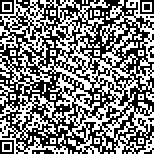| 摘要: |
| [摘要] 目的 探讨无首剂肝素抗凝在高出血风险急性肾损伤(acute kidney injury,AKI)患儿实施连续性肾脏替代治疗(continuous renal replacement therapy,CRRT)中的有效性和安全性。方法 选择22例行CRRT治疗的高出血风险急性肾损伤患儿,随机分为无首剂肝素抗凝组(11例,行CRRT 33例次)和无肝素组(11例,行CRRT 38例次)。两组均采用持续性静脉-静脉血液透析滤过模式,监测治疗前后血肌酐、凝血功能指标变化。记录患者生命体征、血滤器凝血情况及临床出血事件。结果 两组患儿治疗后血肌酐均显著下降,无首剂肝素抗凝组下降明显高于无肝素组[(80.2±8.5)% vs (70.3±10.5)%,P<0.05];无首剂肝素抗凝组平均治疗时间为(18.2±6.6)h,无肝素组为(10.5±3.5)h,差异有统计学意义(P<0.05)。与治疗前比较,两组患者治疗后凝血功能均无明显变化(均P>0.05)。两组患者治疗过程中生命体征稳定,均无出血事件发生。结论 高出血风险急性肾损伤患者行CRRT时,无首剂肝素抗凝模式安全、有效。 |
| 关键词: 急性肾损伤 连续性肾脏替代治疗 无首剂肝素抗凝 出血风险 |
| DOI:10.3969/j.issn.1674-3806.2018.12.10 |
| 分类号:R 725.8 |
| 基金项目:郑州市卫生科技发展计划项目(编号:20140515) |
|
| Efficacy of continuous renal replacement therapy without anticoagulation of calparine for children with acute kidney injury at high risk of bleeding |
|
LI Guang-bo, LI Hong-jiang, LIU Cui-hua
|
|
Department of Nephropathy and Rheumatology, Children′s Hospital Affiliated to Zhengzhou University(Henan Children′s Hospital, Children′s Hospital of Zhengzhou City), Henan 450018, China
|
| Abstract: |
| [Abstract] Objective To explore the advantages and disadvantages of anticoagulation without calparine in continuous renal replacement therapy(CRRT) for children with acute kidney injury(AKI)at high risk of bleeding. Methods Twenty-two children with AKI at high risk of bleeding were treated with CRRT and they were randomly divided into two groups: anticoagulation without calparine group(11 case, 33 times of CRRT) and heparin-free group (11 case, 38 times of CRRT). Continuous veno-venous hemodialysis filtration(CVVHDF) mode was employed on both groups. The serum creatinine,function of the coagulation system were monitored before and after CVVHDF. The vital signs, dialyser clotting and the incidence of bleeding episodes were recorded in the patients during treatment. Results The serum levels of creatinine decreased significantly after treatment in both groups, but the reduction rate was obviously higher in the anticoagulation without calparine group than that in the heparin-free group[(80.2±8.5)% vs (70.3±10.5)%, P<0.05]. The average duration of CVVHDF treatment was (18.2±6.6)h in the anticoagulation without calparine group and (10.5±3.5)h in the heparin-free group, with a significant difference between the two groups(P<0.05).There was no significant difference in the function of the coagulation system between pre-and post-CVVHDF in both groups(P>0.05).The vital signs were stable and no bleeding episodes were found in all the patients in the two groups. Conclusion Anticoagulation without calparine is safe and effective for CRRT in children with acute kidney injury at high risk of bleeding. |
| Key words: Acute kidney injury(AKI) Continuous renal replacement therapy(CRRT) Anticoagulation without calparine Bleeding risk |

